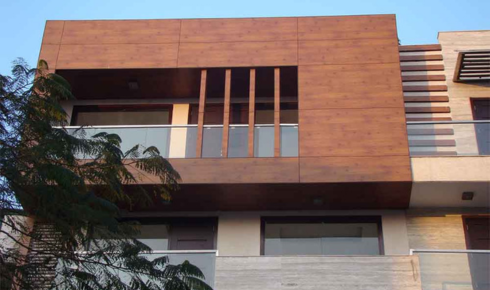The Complete Guide to Cladding: Enhancing Building Protection and Style
August 12, 2025

Cladding has become a crucial element in modern architecture, offering both functional benefits and aesthetic appeal. Whether you are working on a residential, commercial, or industrial project, the right cladding choice can transform a building’s look while improving its durability. From protecting against harsh weather to providing thermal insulation, cladding serves as more than just a decorative outer layer—it’s an investment in long-term building performance.
What is Cladding?
Cladding is the application of one material over another to provide a protective skin or layer. This process helps protect the underlying structure from environmental elements such as rain, wind, and temperature changes. Cladding can be made from a wide range of materials, including metal, wood, vinyl, stone, and composite panels. Each material has unique characteristics that make it suitable for specific applications, depending on the desired look, performance, and budget.
Types of Cladding
- Metal Cladding – Often made from aluminum or steel, this type offers a sleek, modern appearance and excellent durability. It’s resistant to corrosion and easy to maintain.
- Wood Cladding – Known for its natural charm, wood cladding provides warmth and a rustic aesthetic. Proper treatment is required to protect it from rot and insect damage.
- Vinyl Cladding – Cost-effective and low-maintenance, vinyl is a popular choice for residential projects. It comes in various colors and textures.
- Stone Cladding – Adds a luxurious and timeless appeal to buildings. Natural or manufactured stone can be used for both interior and exterior applications.
- Composite Cladding – Made from a mix of materials, it offers enhanced strength, durability, and versatility.
Benefits of Cladding
- Weather Protection: One of the primary functions of cladding is to shield the building from environmental damage.
- Thermal Insulation: Certain cladding materials help regulate internal temperatures, improving energy efficiency.
- Sound Insulation: Some cladding types also reduce noise, making them ideal for urban environments.
- Aesthetic Enhancement: With a variety of colors, patterns, and textures available, cladding allows designers to achieve their creative vision.
- Low Maintenance: Many cladding materials require minimal upkeep compared to exposed building structures.
Choosing the Right Cladding
When selecting cladding for your project, consider the following factors:
- Climate: Harsh weather conditions require materials with high durability.
- Budget: While some materials have a higher initial cost, they may offer better long-term value due to lower maintenance.
- Aesthetic Goals: Choose colors and textures that match the building’s architectural style.
- Regulations: Ensure that the cladding complies with local building codes and fire safety requirements.
Cladding Installation and Maintenance
Proper installation is critical for maximizing the benefits of cladding. Experienced professionals should handle the process to ensure correct sealing, alignment, and attachment. Once installed, maintenance varies by material—metal cladding might only require occasional cleaning, while wood cladding may need periodic sealing or painting.
Environmental Considerations
Sustainability is becoming an important factor in building material selection. Many modern cladding products are made from recycled or eco-friendly materials. Additionally, energy-efficient cladding systems help reduce heating and cooling costs, lowering the building’s carbon footprint.
Trends in Cladding Design
Architects and builders are increasingly experimenting with bold colors, textured finishes, and mixed-material facades. Innovative designs combine functionality with artistic flair, making cladding not just a protective layer, but a statement feature.
Conclusion
Cladding plays a vital role in building construction, offering a combination of protection, insulation, and visual appeal. By choosing the right type of cladding, property owners can enhance both the performance and appearance of their buildings. Whether you’re drawn to the sleek look of metal or the natural warmth of wood, there’s a cladding solution to suit every style and budget. Investing in quality cladding is not just about aesthetics—it’s about long-term resilience and efficiency. For modern construction projects, cladding remains one of the most versatile and essential exterior design elements, making it a top choice for architects, builders, and homeowners alike.
If you’re considering a building upgrade, consulting with a cladding installation expert can help ensure you get the best results for your specific needs and environment.
